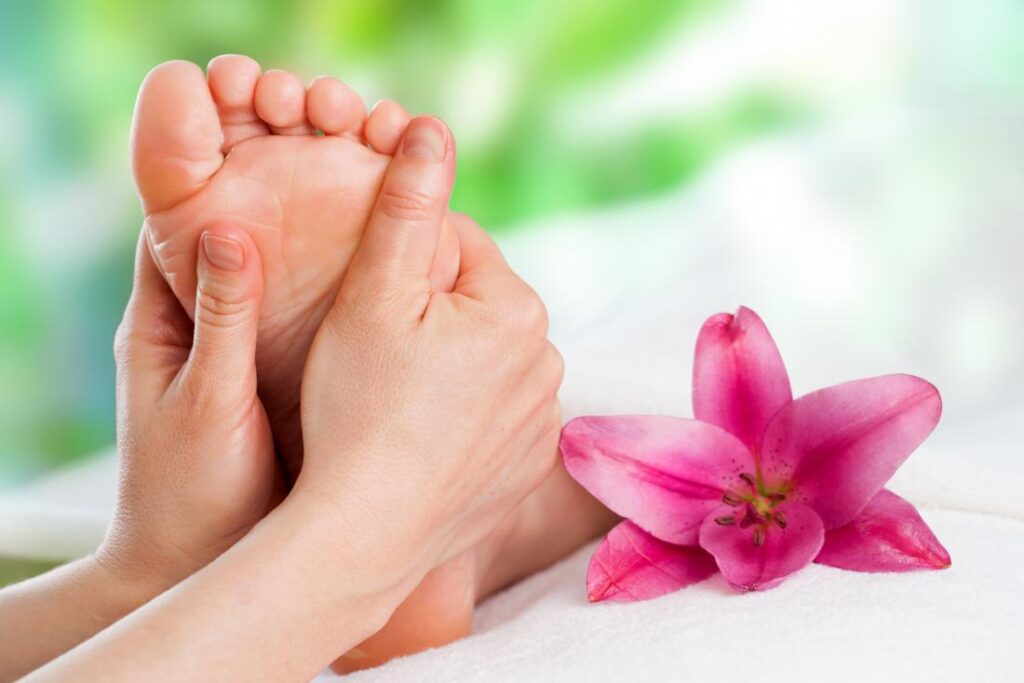Introduction
Reflexology is a therapeutic practice based on the belief that specific areas of the feet, hands, and ears correspond to various organs and systems in the body. By applying pressure to these reflex points, practitioners aim to promote healing, relaxation, and overall well-being. When combined with acupuncture, this ancient technique offers a unique opportunity to enhance the benefits of both modalities. This article explores the principles of reflexology, its benefits, and how acupuncturists can effectively incorporate reflexology techniques into their practice.

Understanding Reflexology
Reflexology operates on the premise that the body is interconnected. Stimulating specific reflex points can lead to health improvements throughout the body. The primary areas of focus in reflexology include:
- Foot Reflexology: This is the most commonly practiced form. Different areas of the feet correspond to various organs; for instance, the toes represent the head, while the arches correlate with the internal organs.
- Hand Reflexology: Similar to foot reflexology, this technique involves pressure on reflex points in the hands, which can affect different body parts.
- Ear Reflexology: Also known as auricular therapy, this involves stimulating points on the ear that correspond to various body parts, promoting healing and balance.
The Benefits of Reflexology
Reflexology offers a wide range of benefits, including:
- Stress Reduction: Reflexology induces relaxation and reduces stress by calming the nervous system.
- Pain Relief: It can alleviate pain, including headaches and joint discomfort, by promoting circulation and reducing tension.
- Improved Circulation: Reflexology enhances blood flow and lymphatic drainage, promoting oxygen and nutrient delivery to tissues.
- Enhanced Immune Function: By reducing stress and promoting relaxation, reflexology may support the immune system.
- Support for Specific Health Conditions: Reflexology has been used as a complementary therapy for various health issues, including digestive disorders and respiratory problems.
Acupuncture and Reflexology: A Powerful Combination
Acupuncture, a key aspect of Traditional Chinese Medicine (TCM), involves inserting fine needles into specific points on the body to balance energy flow (Qi) and promote healing. Integrating reflexology into their practice allows acupuncturists to enhance the benefits of acupuncture in several ways:
- Holistic Approach: Both practices share a holistic perspective, addressing multiple aspects of a patient’s well-being.
- Complementary Techniques: Reflexology can serve as a preparatory technique before acupuncture sessions, enhancing the effectiveness of acupuncture treatments.
- Targeting Specific Conditions: Acupuncturists can focus on reflex points related to specific health concerns while incorporating acupuncture points that support overall health.
- Increased Patient Comfort: Reflexology can be a gentler alternative for patients who may find acupuncture intimidating.
Integrating Reflexology into Acupuncture Practice
Acupuncturists interested in incorporating reflexology should consider the following steps:
- Training and Certification: Pursuing specialized training in reflexology can enhance an acupuncturist’s skills and understanding.
- Assessing Patient Needs: Conduct thorough assessments of patients’ health histories to guide the selection of reflex points and acupuncture techniques.
- Creating a Relaxing Environment: Ensure that the treatment space is calming and comfortable, promoting a positive experience for patients.
- Communicating with Patients: Explain the benefits of combining reflexology with acupuncture to foster trust and understanding.
- Tailoring Treatments: Customize treatment plans to address individual patient needs, incorporating both reflexology and acupuncture techniques.
Considerations and Precautions
While reflexology is generally safe, certain considerations should be kept in mind:
- Health Conditions: Patients with specific health conditions, such as severe circulatory problems, should consult with their healthcare provider before undergoing reflexology.
- Pregnancy: Pregnant individuals should seek specialized reflexology practitioners, as some reflex points can stimulate contractions.
- Individual Responses: Encourage patients to communicate any discomfort or unusual reactions during treatment.
- Ethical Practice: Adhere to ethical practices and professional standards, including obtaining informed consent and respecting patient boundaries.
Conclusion
Reflexology, when practiced by trained acupuncturists, can enhance the overall effectiveness of holistic treatments and contribute to improved patient outcomes. By combining these two modalities, practitioners can offer a comprehensive approach to wellness that addresses both physical and emotional aspects of health. As more individuals seek complementary therapies, the integration of reflexology and acupuncture presents a promising avenue for enhancing the healing experience. With the right training and a commitment to patient-centered care, acupuncturists can harness the power of reflexology to promote relaxation, alleviate pain, and support the body’s innate ability to heal.

























